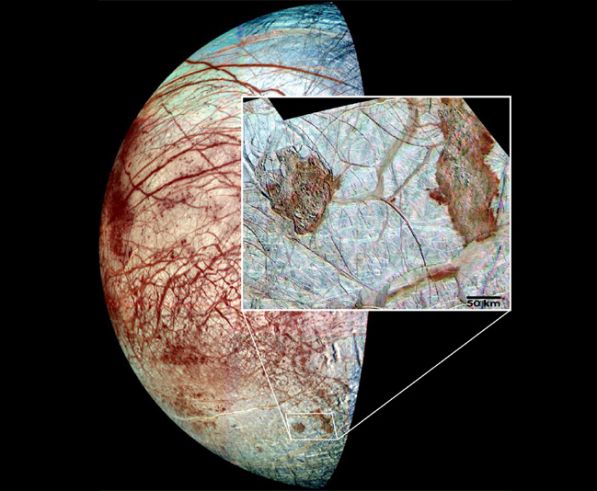
Perhaps the most conspicuous golf course appears in the lower left of each image. Meanwhile, the occasional park or meandering golf course appears green-brown. In these images, buildings and paved areas appear in shades of gray or beige, the clearest example being the McCarran International Airport near the bottom center of each image. In subsequent images, development spreads southward, and by 2004, the entire image shows cityscape, including Interstate 215 passing through southwestern portion of the city. By 1989, however, development filled the upper left corner-a residential area, complete with curving roads and semicircle streets.

Here, the land on the city’s outskirts appears in shades of beige and tan, with just a hint of the street grid to come. Undeveloped land appears along the left edges of the top two images. These images of the western portion of the Las Vegas metropolitan area show the city’s steady spread into the adjacent desert landscape.

The Thematic Mapper captured these true-color, photo-like images on (top to bottom) OctoJJand January 12, 2009. Las Vegas, Nevada, provides an example of the sensor’s ability to monitor change over time. With a resolution of roughly 30 meters (100 feet) per image pixel, Landsat 5’s Thematic Mapper does not detect objects as small as individual houses or trees, but the sensor can detect land use changes, including forest clearing, replanting, and urbanization, over a wide area.
#NASA PICTURE OF THE DAY 1989 SOFTWARE#
Although Landsat 5 needed the occasional software fix to continue functioning, by March 2009, it had provided images of our planet for a quarter of century. Originally intended to last just three years, the satellite exceeded its life expectancy by 22. Caption by Michael Carlowicz.On March 1, 2009, NASA’s Landsat 5 satellite turned 25. NASA images courtesy NASA Ozone Hole Watch. (n.d.) The 2010 Assessment of the Scientific Assessment Panel.

On Octo(top right), the year that the Montreal Protocol went into force, ozone dropped to 108 DU. On Septem(top left), the first year in which ozone was measured by satellite, the ozone level was at 194 Dobson Units. Purple and dark blue areas are part of the ozone hole. The measurements were made by NASA’s Total Ozone Mapping Spectrometer (TOMS) instruments from 1979–2003 and by the Royal Netherlands Meteorological Institute (KNMI) Ozone Monitoring Instrument (OMI) from 2004–present.
#NASA PICTURE OF THE DAY 1989 SERIES#
This series of images above shows the Antarctic ozone hole on the day of its maximum depletion in four different years that is, the days with the thinnest ozone layer as measured in Dobson Units (DU). provided substantial co-benefits by reducing climate change.” In January 2011, the Ozone Secretariat of the United Nations Environment Programme released its latest report and noted that the Protocol has “protected the stratospheric ozone layer from much higher levels of depletion. The treaty included a requirement that scientists regularly assess and report on the health of the ozone layer, particularly the annual Antarctic ozone hole. In the late 1980s, governments around the world woke up to the destruction of the ozone layer and negotiated the Montreal Protocol, an international treaty to phase out ozone-depleting chemicals. But Earth's ozone layer has been damaged by well-intentioned chemicals-chlorofluorocarbons, used for refrigerants and aerosol spray-cans-that have the unintended consequence of destroying ozone molecules. Ozone is Earth's natural sunscreen, shielding life from excessive amounts of ultraviolet radiation.


 0 kommentar(er)
0 kommentar(er)
